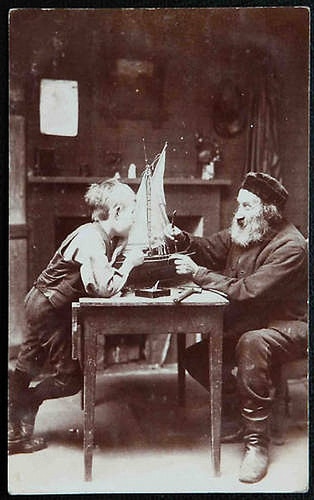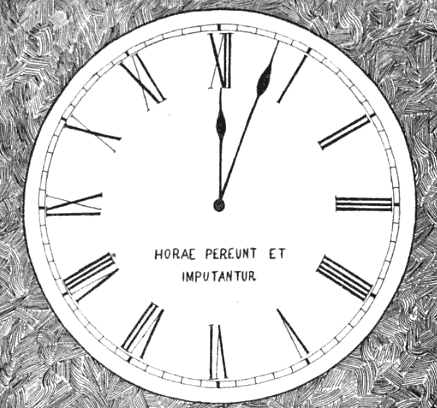The number of productivity strategies out there are innumerable. Every day, dozens and perhaps hundreds of articles are published online about how to get more done, both in work and in life generally. It can be downright overwhelming. If I were to spend the time reading all those new articles and books, I’d have no time to get done what’s actually valuable and important. So if you’re feeling overwhelmed — like you don’t have enough time or like you should be getting more done — where’s the best place to start?
Well, why not at the foundation?
To know how to be more productive, you first need to know exactly how you’re spending your minutes and hours of the day. You say you need to get more done or that you don’t have enough time for everything, but when you actually track your time, you realize you’re spending 60 minutes a day on Facebook. From there, the remedy seems pretty obvious.
I took on this experiment of time tracking, and after a month of doing so, I honestly believe my productivity level to be permanently increased. A light bulb has gone off about how I spend my time, and what to do to make better use of it.
If you’re in a very structured environment where your day is largely dictated by appointments — say as a doctor or lawyer — this activity may not be very helpful for your work hours. But if you feel like your nights and weekends continually slip by in a haze of Netflix and web surfing, and aren’t as edifying, entertaining, and/or enriching as you’d like, you can apply the same principles of time management to getting more from your leisure time.
To take control of your hours rather than being controlled by them and feeling lost at the end of the day, track your time. Below I walk you through the benefits and specific tools to use to conduct this experiment and begin getting more out of life.
Want to Get a Handle on Time? Treat It Like Food
One of the reasons time management is so difficult is that time itself is so nebulous. You can’t see it; it’s abstract; even scientists are still trying to figure out its nature!
To get a better grasp on time, I thus recommend thinking about it like something more concrete: food. The propensity to get distracted is like a craving for junk food. A lack of productivity is like carrying extra pounds around the waist. And the solution? Time tracking, i.e., keeping a food diary.
Multiple studies over the years have confirmed that keeping a food journal over the course of several weeks or even months is one of the most surefire ways to lose weight. In fact, the original study from 2008 showed that those who kept a record — either paper or digital or even photographic — of what they ate in the course of an entire day lost twice as much weight as those who didn’t.
Why is food tracking so effective?
First of all, the simple awareness of what one is eating can come as a shock to those who are overweight. Mindless snacking or regularly ordering dessert doesn’t seem to add up to much…until you document every mouthful of food that crosses your lips.
There’s also an intrinsic accountability that comes with food journaling. When you scarf down a Whopper on the commute home, and discard the evidence before walking in the door, the act effectively disappears from your consciousness. Once you write that Whopper down though, it becomes real. It happened. You’ve got to internally fess up to it.
Awareness and a healthy sense of shame and accountability add up to the fact that food diary keepers lose weight much more effectively than those who do not.
The same exact benefits and reasonings apply to keeping a record of how one spends their hours and minutes. So if you want to start seeing your productivity abs, start tracking your time.
Want to Get More Done? The Benefits of Tracking Your Time
Tracking your time is not a very sexy method of increasing your productivity. Rather than a shiny new app (or a shiny new smartphone), it requires the meticulous tracking of your minutes and hours throughout the day over the course of a couple weeks, or even months. It’s also, ironically enough, a time-consuming task; but this investment up front will reap dividends for the years and decades to come.
Let’s first get into some specific benefits tracking your time has on productivity, and then go into the best ways to actually do it.
1. It Builds a Foundation For Other Productivity Methodologies
“Without becoming aware of how you currently spend your time, it’s hard to reflect on whether you’re acting in ways that match up with what your values and highest-impact tasks are. Keeping a time log is a great way to find your starting point, your base level.” –Chris Bailey, The Productivity Project
You wouldn’t dive into a strength training program without first establishing baselines for what you can lift. The same should be true for when you’re trying to establish new routines in order to get more done. If you don’t have an accurate picture of how your time is being spent and what you’re getting done with that time, how can you possibly establish realistic goals and timelines for accomplishing them?
To use an example from above, if you don’t realize you’re spending 60 minutes a day on Facebook, how can you even know that you need to take steps to alleviate your social media consumption? If you aren’t tracking your hours, it may not even enter into your consciousness, and you’d perhaps simply be thinking that you need a new to-do list system. In reality, you need to block Facebook.
Logging your time allows you to focus on establishing productivity methods that actually apply to your real life versus just what you think you need to do.
Since tracking my time, for example, I’ve realized that if my day isn’t well-planned out with at least 3 important must-complete tasks, I end up wasting more time because I’m just sort of floating around trying to figure out what needs doing, and I inevitably try to multi-task. When I plan ahead though, especially when it’s the day before, I can jump into the morning with a full head of steam, and not waste any time simply trying to figure out what’s on my agenda. Without logging my time, I’m not sure I would have realized that the first 20-30 minutes of my day were largely ineffective due to not having a concrete plan.
2. You’ll Come to Realize You’ve Been Overestimating How Long Certain Things Take…
It seems like everyone these days feels like they’re constantly busy.
But what if your busyness was more a problem of perception, rather than reality?
One of the primary reasons that you may think you don’t have enough time for everything is that you likely misjudge how much time certain tasks actually take, and how much time you really spend on them. Author Laura Vanderkam writes about this phenomenon:
“We are prone to over- or underestimate things based on socially desirable perceptions or current emotions. For instance, few of us love the routine aspects of housework or household administration. Emptying the dishwasher or paying bills doesn’t take much time, but we feel like we’re always doing these chores. So if someone asks us how much time we spend on such things, we overestimate — by something on the order of 100 percent for both men and women — compared to the actual numbers recorded in time diaries.”
When it comes to the overestimation part of the equation, the negative effect is that you feel busier than you really are. When you look at your schedule, you inflate how long certain tasks will take, feel artificially swamped, and are discouraged from attempting to work on certain goals or starting a particular hobby. Plus, you may even spend more time on an activity than you actually need to, in order for its duration to match your preconceived estimate; work fills the time, as they say.
A few months ago, I might have said that my daily and weekly maintenance tasks for work (the little things that don’t take much time or effort, or add much value to the bottom line, but need to be done) take me 1-2 hours per day. When I started tracking my time, though, I came to realize that those things really only took me about an hour per day, and sometimes even less than that (down to 30 minutes, occasionally!). I started to dawdle less to fill the time I had previously estimated these tasks would take, and discovered I had more time than I thought, which motivated me to create a more ambitious daily agenda.
Not all tasks only feel time-consuming, of course; some actually are, and you may in fact not have enough time to do all the things you’d like. But chances are high that after tracking your time for a couple weeks, you’ll find some tasks that take less of it than you thought, that you’ve been leaving some good hours on the table, and that you can fit more things into your schedule than you’d realized.
3. …And Underestimating How Long You Spend on Other Things
We all have the same 168 hours over the course of a week. How is it that some people just seem to get more done than others? Do they find more minutes in the day, which are secreted away and only accessible to the hyper-productive? Of course not!
They just make better use of the stockpile of golden time we all get each day.
Just as we often overestimate how long things take, we also underestimate how much time we spend on certain activities.
Our tendency to inflate how much time things like chores require comes from the fact that such tasks are more onerous to perform, and thus more salient. Conversely, tasks that require little cognitive hefting, that are more passive in nature, tend to slip by with little notice.
Just as food journalers don’t necessarily know all they’re eating, most folks, for example, don’t count the hours they’re looking at screens. They may think they’re only watching an hour of TV a day, but when they actually track it, it turns out to be three. They think they only check their phone for a few minutes a few times a day, but when they add up all those little “peeks,” they realize they’ve spent an entire hour texting and scrolling Instagram.
There are passive, wasteful activities we partake in throughout the day which could be reduced and reclaimed for better purposes. You can’t know what those are, however, unless they’re actively tracked!
4. It Keeps You Immediately Accountable
As with keeping a food journal, logging your time keeps you accountable right away to wasted time. When you dawdle around online for an hour, then go back into work mode, it’s quite possible that nobody noticed it except for you, and it effectively just disappeared into the ether (let’s call this phenomenon a “Time Whopper”). All you have is your guilt, until you forget about it and then waste another hour or two tomorrow.
When time tracking though, you have to write down that hour of wasted web surfing. You see it logged, and there’s a different type of reaction. Whether writing or typing on a device, “12pm-1pm: web surfing” provides a bigger pang of healthy conviction than simply thinking, “Whoops, there goes another hour.” You have to stare that wasted time right in the face and acknowledge it.
In my own experience of time tracking, this was a far greater motivator than I expected it to be, and I suspect you’ll find the same to be true. At the end of the day, you’ll want to see a log filled with productive activities — even if productive means reading or playing with the kids. When you waste time and log it, you’ll be inspired the next day to have a clean slate and no lost hours on your timesheet.
5. Allows You to Put More Load on the Arch
Sometimes when you log your workday for a period of time, you come to realize that you actually don’t have quite enough to do. You’re wasting time because you have the ability to do so with no real detriment to your work.
If you’re tracking your time and come to the conclusion that you can get all your work done with plenty of time to spare, but you actually feel like you’re unproductive or that you could take on more, you can decide to put some more load on the arch. If you’re self-employed or largely self-directed, this is easy. Call some potential clients, write more blog posts, make phone calls to vendors to negotiate down your prices. If you’re not self-employed, ask your supervisor if there are any projects you can work on; it’s pretty much guaranteed that you won’t be turned down.
6. Forces You to Single-Task Rather Than Multi-Task
It’s well known that multitasking is horrible for your productivity. The whole idea of it is a myth anyway; you’re not actually doing multiple things at once, you’re simply very quickly cycling through different activities. Your brain isn’t built to tackle work like an octopus, so things inevitably get missed or not done as well as they could have been.
When you’re time-tracking, you’re aware that each increment — be it 15 minutes or an hour — is being logged. This means, at least in my experience, that you give each task its due time for the simple fact that you want to be able to log it accurately. If you’re spending mere minutes on a variety of tasks, your log will be a mess. But there’s a certain pride that comes with being able to mark down a full hour or two on a single important item.
Over time, you’ll come to realize that you’ve grown your ability to focus, and you won’t be tempted to multi-task and intersperse your important work with mindless maintenance tasks. Rather, you’ll learn to block off 30 or 60 minutes per day to these simple to-dos and get them all out of the way in one fell swoop.
How to Track Your Time Accurately and Effectively
Now that we’ve discovered the benefits of time-tracking, let’s get into the nitty gritty about how to actually do so to make the most of it. We’ll start with some overarching principles, then get into a few helpful tools you can use.
There are three general keys to getting the most out of time-tracking:
- Honesty. If you aren’t honest about how your time is spent, what’s the point? You’re the only one seeing your time log (unless you choose otherwise), so you’re only shorting yourself should you lie.
- Consistency. In studies about food journalers, it was found that those who were unsuccessful in losing weight failed because they gave up journaling after just a few days. To get a true picture of how your hours are spent in a consistent manner, you need at least two weeks of time-tracking. And they should be “normal” weeks — not during holidays or before vacations or anything like that. Go for as typical a timespan as possible.
- Meticulousness. This was the other item that kept food journalers from recognizing their goals. For time-tracking to be effective, you really need to be detailed about it. Don’t think in hours, but in minutes. For the first few days of tracking, I detailed my day down to the minute from when I woke up to when I went to bed. Then for the next few days I worked in five-minute increments. And finally for the remainder of the two weeks, I tracked in fifteen-minute increments. Yes, it takes some time, but it’s just two weeks. You can do it.
Beyond these three keys, there are two basic frameworks for tracking time:
- By time of day. When tracking by time of day, you’ll write down your activity for a set chunk of time, say 9-9:15am. Set a timer for every 15 minutes (at first, at least; it can be longer as you’ve gotten into it), and take a quick second to jot down what you’ve been doing.
- By task. With this method, you’ll go about your day and activities as normal, and simply write down what time you change tasks and start something new.
Try both, and see what works for you. For my first few days of time-tracking, I did so by task. I’d write down, to the minute, when I started and stopped doing something and moved on to a new activity. This helped me figure out how long things actually took, and how my day was naturally being structured.
After that, I went into tracking by time increments, which is more useful for planning purposes, understanding what times of day you’re more likely to waste time, how to structure your breaks, etc. Another benefit is that when you have a timer to remind you to write down what you’ve been doing, it re-focuses you if you’ve gotten off track.
I also liked adding some context to my time-tracking notes. If I was “Reading,” I noted which book or magazine. I sometimes noted the weather or a podcast I was listening to while “Driving.” For “Making coffee” I’d mark which roast I was using and which method: “Jamaica, dark roast, French press.” “Playing with Graham” (our toddler) was more detailed to “playing catch around the house with little basketball.” In this way, it became almost a journal in addition to just a time-tracker. That’s not necessary, but can be enjoyable to look back on.
After two weeks of meticulous tracking, it’ll almost become habitual. It did for me at least. Even though I’m not tracking as carefully now, I frequently check the time (during work hours, at least), and mentally ensure I’m making the most of it. If I feel like I’m getting off, I’ll jot down in my pocket notebook what I’m doing and for how long, and it’ll quickly get me back on track.
Even if you don’t continue tracking at all after your two-week experiment is over, you should still conduct a time audit once a year or so, just to see how things have changed and to keep yourself on track (or to re-align if things got off). And of course, you can also always take inventory if you get to feeling like you could squeeze a little more out of your days (or, conversely, if you feel like you don’t have enough time!).
Digital Tools
There are a number of digital tools on the market to help folks track their time automatically, following your keystrokes and open apps/tabs to see what you’ve been up to. In general, my own finding has been that while digital tools can be helpful, they shouldn’t be relied upon for the entirety of your time-tracking. Even if you’re on a computer all day, a simple log of the websites and apps you used may not be entirely helpful. Sure, you were on Facebook for an hour, but if you’re in marketing, a good chunk of that (or even all of it) might have been for work purposes. Only you can know what you were doing on a particular website or app; digital apps can’t do that for you.
Having said that, they can be helpful supplements to what you’re doing and help jog your memory should you forget to log something over the course of a couple hours.
RescueTime is the leader in the space. It’s a program you download that works in the background of your computer to track how much time you’re spending on various websites and web-connected apps. It works across multiple operating systems and even on Android phones. It offers all kinds of reports, too, about how your time is spent, even going as far as to track your efficiency and productivity growth if you enter in pre-set goals (such as “spend one less hour on email per day”).
Toggl is a basic web-app timer. While primarily intended for freelancers or folks who need to track client time, its robust tagging and categorizing features have made it popular for goal-setting of all kinds, from fitness to general productivity. Handy charts and graphs make your productivity visual, too, which is helpful.
ATracker is only available on iOS, but is a handy app to easily track your time. You simply add common tasks (or time wasters), click on it to mark you’re doing it at that moment, then when you click the next task or activity, the previous is automatically stopped and logged. So you’re manually tracking your time, but doing so with a digital interface.
Evernote, like ATracker above, is sort of a combo between digital and analog. You’re using a device, but only to log your time rather than actually track it or graph it. Use Evernote like you would a sheet of paper; create a new notebook for your time logs, and mark down how your hours have been spent.
Analog Tools
Good old fashioned pen and paper worked the best for me. I didn’t use any digital tools at all, because I knew it would probably end up being a distraction in and of itself (“Charts and graphs of my productivity! How productive!”).
168 Hours Timesheet. This handy timesheet template was created by author Laura Vanderkam. You simply write down what you’re doing in 15-minute increments over the course of the entire 168 hours in a week. Keep this sheet handy on your desk, your kitchen counter, your nightstand. After a couple weeks, you’ll have a pretty good idea of your biggest time-wasters, as well as how long things actually take versus what you think they do.
Pocket notebook. The pocket notebook is a classic for a reason. Fits in your back pocket, so whenever you change tasks or activities, mark it down, with explanatory notes if needed. For example, if you were reading a web article for work, mark it as such versus just “online reading.” Review at the end of the day and see if you’re happy about how your time was spent. If you’re like me, you’ll almost immediately notice what went awry, what distracted you and wasted time, and you’ll have a healthy amount of shame to remedy the situation. Immediate accountability FTW!
When you can look back on your time sheet and see a full, productive day, you’ll feel an immense pride, and that you truly earned your relaxation and sleep. Time tracking not only changed how I spent my minutes and hours, but how I look at my life, and my time here on Earth, as a whole. Make sure you’re spending time on the things that really matter.
Track your time, change your life. Take 2017 by the horns.
_____________________________
Sources
The Productivity Project by Chris Bailey
168 Hours by Laura Vanderkam








